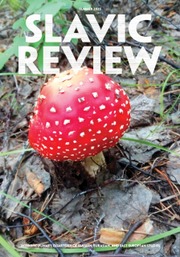No CrossRef data available.
Article contents
Spatial Scenarios in the History of the Romanov Empire
Published online by Cambridge University Press: 30 October 2025
Abstract
The wide-ranging spaces of Russia in its various guises have not always been reflected in historical narratives, which for many years focused on Moscow and St. Petersburg. This viewpoint piece focuses on how the entangled histories approach could be applied to tell the empire’s story without telling an imperial story. It ends with asking which vertical threads from the center are necessary to weave together a coherent narrative.
Information
- Type
- Critical Forum: Entangled Spatial History
- Information
- Copyright
- © The Author(s), 2025. Published by Cambridge University Press on behalf of Association for Slavic, East European, and Eurasian Studies.
References
1 Richard S. Wortman, Scenarios of Power: Myth and Ceremony in Russian Monarchy, vol. 1 (From Peter the Great to the Death of Nicholas I) and 2 (From Alexander II to the Abdication of Nicholas II) (Princeton, 1995, 2000).
2 Georgiy Kasianov, Memory Crash: Politics of History in and around Ukraine, 1980s–2010s (Budapest, 2022); Olga Bertelsen, “Russian Front Organizations and Western Academia,” International Journal of Intelligence and Counterintelligence 36, no. 4 (January 2023): 1184–1209.
3 Serhy Yekelchyk, “Bridging the Past and the Future: Ukrainian History Writing Since Independence,” Canadian Slavonic Papers 53, no. 2–4 (June, September, December 2011): 559–73.
4 Vladimir Paperny, Architecture in the Age of Stalin: Culture Two (Cambridge, Eng., 2002).
5 Susan Smith-Peter, “S.U. Remizov i Sibirskaia identichnostʹ v kontse XVII- nachale XVIII v,” trans. E.M. Karageorgii, Sibirskie istoricheskie issledovaniia, no. 3 (2014): 7–23.
6 Anne Lounsbery, Life is Elsewhere: Symbolic Geography in the Russian Provinces, 1800–1917 (Ithaca, 2019).
7 Susan Smith-Peter, Imagining Russian Regions: Subnational Identity and Civil Society in Nineteenth-Century Russia (Leiden, 2018).
8 Susan Smith-Peter, “Communism and Regionalism,” in Xose M. Nunez Seixas and Eric Storm, eds., Regionalism and Modern Europe: Identity Construction and Movements from 1890 to the Present Day, (London, 2019), 135–49.
9 Susan Smith-Peter, “Rethinking ‘the Russian Archives,” Ab Imperio, no. 2 (2022): 63–69.
10 Robert Byrnes, “The Survey Course that Became a Classic Set: Kliuchevskii’s Course of Russian History,” Journal of Modern History 66, no. 4 (December 1994): 737–54.
11 Mark von Hagen, “Writing the History of Russia as Empire: The Perspective of Federalism,” in Catherine Evtuhov and Boris Gasparov, eds., Kazan, Moscow, St. Petersburg: Multiple Faces of the Russian Empire (Moscow, 1997), 393–410. See also Susan Smith-Peter with response by Sean Pollock, “How the Field Was Colonized: Russian History’s Blind Spot,” Russian History 50, no. 3–4 (May 2023): 145–56.
12 Vitaly Chernetsky, Mapping Postcommunist Cultures: Russia and Ukraine in the Context of Globalization (Montreal, 2007).
13 Mark von Hagen, “Federalisms and Pan-movements: Re-imagining Empire,” in Jane Burbank, Mark von Hagen and Anatolyi Remnev, eds., Russian Empire: Space, People, Power, 1700–1930 (Bloomington, 2007), 494–510.

